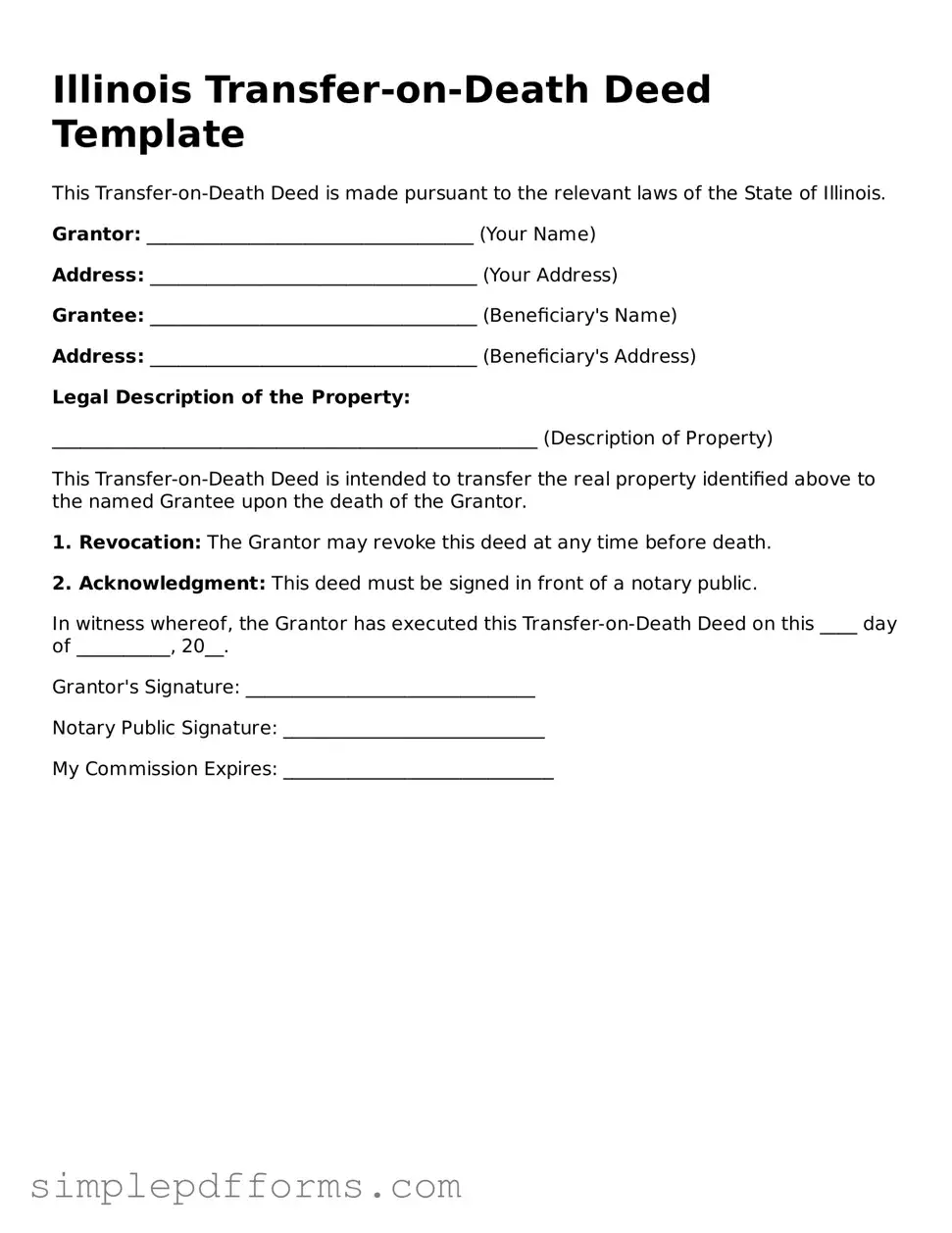Attorney-Verified Transfer-on-Death Deed Document for Illinois State
The Illinois Transfer-on-Death Deed form allows property owners to transfer their real estate to designated beneficiaries upon their death, bypassing the probate process. This legal tool provides a straightforward way to ensure that assets are passed on according to the owner's wishes. Understanding how to properly utilize this form can simplify estate planning and facilitate a smoother transition for heirs.
Open Transfer-on-Death Deed Editor Now
